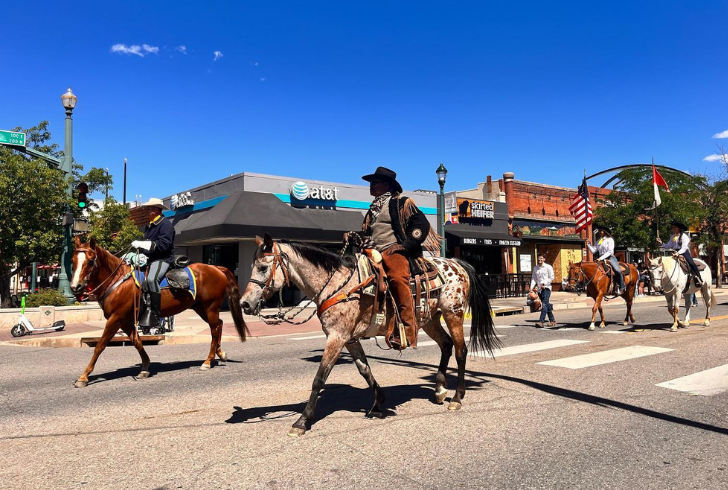Cowboy Superstitions and Traditions That Still Ride Strong Today
Cowboy life is often seen as gritty and rugged, filled with early mornings, dusty trails, and raw determination. But beyond the boots and broncos lies a lesser-known side of cowboy culture—one filled with rituals, beliefs, and timeworn traditions that many still follow to this day.
Superstitions, in particular, play a subtle but powerful role in the rodeo world. For cowboys, these practices aren’t just habits—they’re personal codes that carry meaning, luck, and a deep connection to heritage.
Everyday Superstitions That Cowboys Swear By
Long before cowboys ride into the arena, many follow routines believed to bring good luck—or ward off the bad kind. These customs, often passed down through generations, are rooted in respect for the sport and its risks. While some of these beliefs might raise eyebrows, they’re treated seriously in the rodeo world.
1. Hats and Luck Go Hand in Hand

Instagram | cowboysindiansmagazine | Cowboys strictly avoid putting hats on beds, fearing it invites misfortune or injury.
One of the most well-known cowboy superstitions involves hats. Never, under any circumstances, should a cowboy place their hat on a bed. It’s believed to bring bad luck—some say even injury. Whether it stems from old cowboy bunkhouse stories or earlier traditions, it’s one rule few break.
Additionally, turning your hat upside down is considered a mistake. Cowboy hats aren’t just part of the uniform; they’re believed to hold luck inside. Setting one down upside down is thought to let all the luck spill out.
2. The Color Yellow
Cowboys are typically bold and unshaken, but many avoid wearing yellow. In rodeo folklore, the color is linked to cowardice and bad fortune. While it’s not an official rule, many competitors will steer clear of it entirely—especially on competition days.
3. Chewing Gum Before the Ride
Rodeo athletes develop pre-competition routines that almost become sacred. For some, that’s a specific type of chewing gum. Double Mint gum, for instance, has become a ritual chew for a few seasoned cowboys. It’s not the brand that’s magic, but the familiarity—it calms nerves and locks in focus.
Cowboy Beliefs Go Beyond the Arena
While rodeo superstitions are fascinating, cowboy values stretch far beyond the competitive field. At the heart of this culture lies a strong connection to land, animals, and family. Cowboys often carry a deep sense of responsibility—both in how they treat their horses and how they represent their way of life.
What Truly Defines a Cowboy
1. Love for the country – Whether riding across wide-open plains or representing their state in a national rodeo, cowboys carry pride in where they’re from.
2. Respect for animals – Working with cattle and horses teaches patience and partnership. This connection runs deep and is treated with real care.
3. Strong family roots – The cowboy lifestyle is often handed down through generations, with children learning early on what it means to live by grit and respect.
These values are not just talked about—they’re lived every day, whether on the ranch or during rodeo season.
The Rodeo World Keeps the Cowboy Spirit Alive

Instagram | journoesteph | Pikes Peak or Bust Rodeo exemplifies pure cowboy culture, featuring skilled and traditional competitors.
Go to a rodeo like Pikes Peak or Bust, and you’ll find more than bucking broncs and flashy belt buckles. The riders there, some of whom started young enough to need help saddling up, aren’t just showing off skills; they’re carrying on something bigger. The rodeo isn’t written down in a rulebook. It’s taught by watching, listening, and doing—year after year.
Ask around, and no one can quite tell you where half the superstitions came from—why some won’t shave before a ride or always chew the same brand of gum—but nearly every cowboy has a ritual. These aren’t just habits; they’re inherited markers of rodeo culture. No matter how small, each one carries a personal story or a lesson someone once learned the hard way.
A Tradition Built on Grit and Respect
The cowboy image might look solitary, but the truth is, this world runs on community and quiet discipline. The things riders believe in—no matter how minor they seem—have meaning passed down from one generation to the next. What might look odd from the outside is a way of staying connected to something older.
These aren’t just personal quirks. They’re signals. A rider who goes quiet before a run, who touches the brim of his hat a certain way, is tapping into something older. Something that doesn’t need to be explained—but is understood by anyone who’s lived that life.